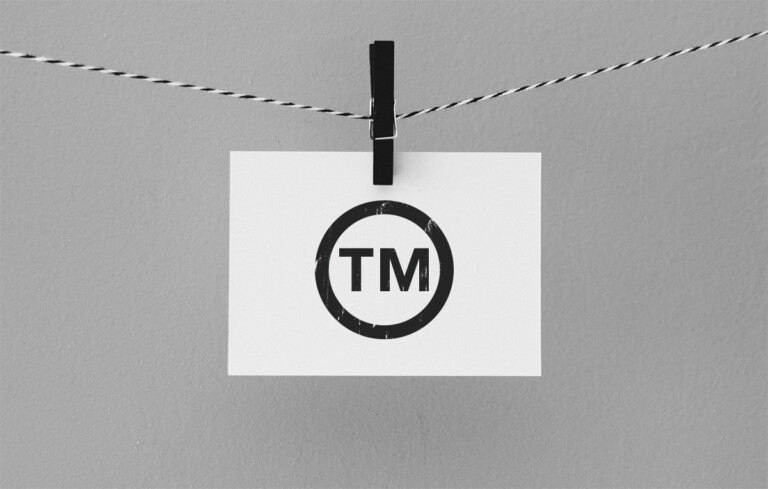
Work integrated learning is a priority for many post-secondary institutions and governments. However, work integrated learning (WIL, also commonly referred to as experiential learning), is not a single thing—it is an umbrella term that can describe experiences ranging from formal work placements and co-op terms integrated into the academic calendar, to extracurricular volunteer programs… and many variations in between.
Whatever the type of WIL, the academic and the less formal literature out there expounds the benefits of WIL for the three main categories of participants: students, WIL providers, and post-secondary institutions (if you will, the three legs of the stool).
In this article, we hope to contribute to the literature by exploring several critical aspects of the relationships between these three categories of participants. This is important, in our experience, because uncertainty about these relationships can lead to confusion about WIL and engender reluctance to translate what many consider to be a great idea, into a great experience.
In particular, we will discuss:
- the scope of WIL activities
- the purpose and relationships driving different WIL opportunities
- employment law implications
- intellectual property law implications
- privacy and confidentiality implications
What range of activities is caught up by the term Work Integrated Learning (WIL)?
As noted above, the term WIL describes a wide range of paid positions (e.g., internships, co-op placements, and work-terms), unpaid learning opportunities (practicums, course work, field work, and capstone projects), and volunteering/service learning.
As a result, the concept of “work” in Work Integrated Learning is flexible and signals learning in contexts other than the traditional classroom setting by using ‘real world’, rather than theoretical, examples, issues, problems, etc. The ‘real world’ includes the full range of human endeavor, from for-profit businesses, to charities and non-profit organizations, to governments and national and international organizations. The ‘real world’ may also be very near to the classroom, as many post-secondary institutions create WIL opportunities working within the institution itself.
What is the purpose of WIL in the academic context, and how does the purpose drive the relationship of the parties?
Generally speaking, the purpose of WIL in the academic context is to provide learning opportunities to students. Some WIL programs must be completed before a student can graduate. Others are extra-curricular or non-curricular, meaning that while they are recommended, they are not required for graduation. Still others are both requirements for graduation and for post-graduation licencing or certification.
The purpose of the WIL opportunity has both practical and legal implications, so we’ll explore each in turn.
(1) A course or program requirement
WIL may be a requirement to pass a course or complete a program. In other words, completing some element of WIL is mandatory for the student’s program or course, and contributes to course credit. For example, a course may be built around a real-life problem brought to the students by an external organization (e.g., a local business); a co-op program will require students to complete a certain number of co-op terms; and many clinical programs, such as nursing, will require students to complete a practicum placement.
In these circumstances, the institution and the student are primarily concerned with achieving certain educational outcomes, which often include some sort of work-product from the student, such as a presentation and paper (e.g., regarding their proposed solution to the real-life problem), or a self-reflection paper (note the impact on confidentiality, discussed below).
The institution may expect the WIL provider to provide certain educational experiences, and may also expect that the WIL provider will provide feedback to the institution about the student’s performance, as is often the case in a clinical practicum (note the impact upon personal information and privacy, discussed below).
In these situations, the WIL provider must understand, and be aligned with, the primarily educational purposes of the student and the institution, rather than seeing it largely as an opportunity to have a student perform some work, or accomplish a task; the students should not be seen as akin to consultants or independent contractors, but as learners benefiting from the experience of working in the ‘real-world’. Of course, there likely will be direct advantages to the WIL provider, such as benefitting from a different and diverse perspective on a problem, identifying and attracting future job applicants, broadening the talent pool in the WIL provider’s industry, and in certain instances providing an extra pair of hands. Any of those advantages should be seen as an added bonus to the primary benefit, which is giving back to the community through student development and education.
In this context, the legal relationships among the parties are often not employment relationships. Rather, they often include two main agreements: first, an agreement between the post-secondary institution and the WIL provider—among other things, this agreement will address expected educational outcomes, responsibility for students’ safety on site, and, in the comprehensive forms we recommend, issues of confidentiality, privacy and intellectual property. Second, there should be an agreement between the institution and the student—among other things, this agreement will set out issues of expectations and student conduct, and comprehensive forms also will cover confidentiality and intellectual property.
However, where the WIL is a paid employment relationship, like a co-op, there is normally a single agreement: an employment agreement between the student and the WIL provider. In this case, the expectations of the post-secondary institution are communicated to the student through the institution’s program description, graduation requirements and policies.
(2) A non-curricular or extra-curricular opportunity
Many post-secondary institutions facilitate WIL opportunities by bringing students and external parties together, while not strictly requiring the WIL opportunity as part of a course or program. In other words, it is not mandatory for the student to complete WIL in order to graduate or pass a course. The institutional imperative is to provide a service to students, namely facilitating opportunities and connections between students and external parties in a student’s field of study.
In these situations, the institution will be focussed on facilitating valuable hands-on experiences for students; however, the WIL provider will be the main driver in determining the focus, scope and purpose of the WIL experience.
In such contexts, the ultimate legal relationship will be between the student and the external party (for example, an employment agreement, or volunteer agreement), and often there is no need for an additional written agreement between the WIL provider and institution, or between the student and the institution.
(3) An external, regulatory requirement
Post-secondary institutions offer the educational foundation to many licensed professions and trades. However, to become licensed or certified, students often will need to complete particular work experience during the program or, in some cases, after graduation.
Fulfilling licensing or certification requirements after graduation is normally not considered WIL, as it happens after the student has left the post-secondary institution, and then decides to pursue licensing or certification (and not all do). Often, while post-secondary institutions facilitate matching programs or otherwise assist students to find placements, the ultimate relationship (often an employment relationship) is negotiated directly by the student and the placement provider.
For a small number of programs, the licensing or certification requirements are completed (in full or in part) as part the post-secondary program. In these cases, the considerations are largely similar to those discussed in section (1) above, but must also be designed to meet the requirements of the licensing or certifying body. In some cases, such as in health sciences, agreement templates have been developed for particular kinds of WIL, e.g., clinical placements, which tend to be robust agreements that cover expected educational outcomes, responsibility for students’ safety on site, confidentiality, privacy, and intellectual property.
Is employment law relevant to WIL?
Yes. As discussed above, many WIL opportunities are actually employment relationships between a WIL provider and the student.
Each Province and the Federal government have passed employment laws that will impact upon the WIL relationship between the student and the WIL provider. The laws of other countries differ and, in some cases, dramatically so.
It is important, therefore, to consider not just where the student and post-secondary institution are located, but where the WIL provider is located—and in the remote-work context, where the work actually will be performed.
One issue that arises often is the idea of the unpaid intern, which is permitted in some jurisdictions. However, employment law in British Columbia (where the authors are situated) does not permit unpaid internships or apprenticeships—if the student is performing “work”, they are an employee and must be treated as such (e.g., with respect to wages, hours of work limits, etc.). Conversely, in B.C., a practicum (which is defined as ‘hands-on training’ or the practical application of classroom taught theory) is not generally considered to be “work”, and the student is not considered to be an employee.
Helpfully, many jurisdictions publish guides to help institutions, students and external parties identify and comply with local employment laws. See for example:
For the Province of British Columbia – see the definition of “Work”: Employment Standards Act & Regulation Definitions – Province of British Columbia (gov.bc.ca)
For Federally regulated employment: https://www.canada.ca/en/services/jobs/workplace/federal-labour-standards/interns.html
Who owns intellectual property created in the course of a WIL opportunity?
It is common for students participating in a WIL opportunity to create written works, which are protected by copyright law (e.g., reports, papers, presentations, client records, memoranda, recordings, social media posts, etc.).
It is less common, but still quite possible, for students to co-create patentable inventions.
The ownership and use of copyright and patents created in the course of a WIL experience can be of real concern, but with a mindful consideration of the issues and open dialogue (and a written agreement) will go a long way to addressing any concerns.
Let’s look at copyright and patents, in turn:
Copyright:
-
Employers own the copyright in works created by their employees. The exception is where the employment agreement expressly says that the employee owns the copyright.
-
Non-employees, such as independent contractors and students participating in non-employment WIL, own the copyright in works they create, but where the work is created for another person, that other person usually has the implicit permission to use the work for the purpose(s) for which it was created.
-
Of course, it is perfectly acceptable for the parties to negotiate a different arrangement, such as where the person paying for the work to be created owns the copyright in the work, and the person creating the work retains the limited permission to use the work (such as for their portfolio or resume).
-
In addition, all authors (even employees) have moral rights in their works. Moral rights are a complicated topic, but can be quickly (if loosely) summarized as including what are known as the rights of paternity (being identified as the author), integrity (the right to stop certain uses or dealings in the work that prejudice the honour or reputation of the author), and association (the right to prevent the use of the work in association with a product, service, cause or institution if prejudicial to the honour and reputation of the author). Moral rights cannot be assigned, but they can be waived expressly and implicitly, in full or in part. Often, waivers of moral rights are not specifically discussed, and it is left for the parties to wonder whether moral rights have been retained, or implicitly waived. A clear understanding of the purpose of the WIL and the ultimate work-product, should reveal each party’s interests, and they can then settle (and ideally document) their agreement.
Patents
-
Generally, employees own their inventions. The exception to this is where either the employment agreement expressly states that the employer shall own any inventions created by the employee, or the employee has been ‘hired to invent or innovate’. The latter requirement is fact-specific and should be determined with the assistance of legal advice.
-
Non-employees, such as independent contractors and students participating in non-employment WIL, will also own their inventions.
-
Of course, as with copyright, it is open for the parties to negotiate a different result, but that agreement should be set out in writing and with the benefit of professional advice.
For these reasons, it is important for institutions, students and external parties to openly discuss the employment status of the student (whether employed or not), what sorts of work product the student will be creating in the course of their WIL experience, and confirm, in writing, who will retain ownership and use of those works.
What are the privacy and confidentiality implications of WIL?
Depending on the nature of the relationship between the parties, the WIL experience may involve parties sharing confidential information with one another. For example, the WIL provider may need to share confidential business, client, or patient information with a student, so they may complete their work or otherwise get the full benefit of the WIL experience.
Therefore, expectations around confidentiality should be discussed with the student and even be reflected in a written confidentiality agreement (also known as a non-disclosure agreement/NDA). This is often already addressed in employment agreements, so any WIL experience involving employment should have this covered—but it is always prudent to check.
However, WIL providers offering non-employment opportunities should turn their minds to confidentiality and consider strategies to protect their confidential information. For example, they could structure the opportunity so that the student does not obtain or handle confidential information, or they may wish to ask students to enter into a written confidentiality agreement or NDA.
It’s also important to note that the student’s personal information may need to be shared in order to facilitate the WIL experience. For example, the institution will need to provide information (maybe a resume, or perhaps just their program, major and status) to the WIL provider and, in some WIL experiences, the WIL provider must provide a copy of the student’s work product or information about the student’s performance to the institution for assessment purposes. All of this is the student’s personal information.
Therefore, care must be taken in protecting the students’ personal information, as required under the Freedom of Information and Protection of Privacy Act (for public bodies) and the Personal Information Protection Act (for private entities).
In conclusion
There are many more issues that could be discussed, such as working with international students and out-of-province students, workers compensation and other insurance coverage, and academic integrity in the WIL context. Stay tuned for future articles on this topic.
In the meantime, if you have any questions about these or any other issues that arise in the WIL context, please contact the authors—we’d be pleased to discuss them with you.



